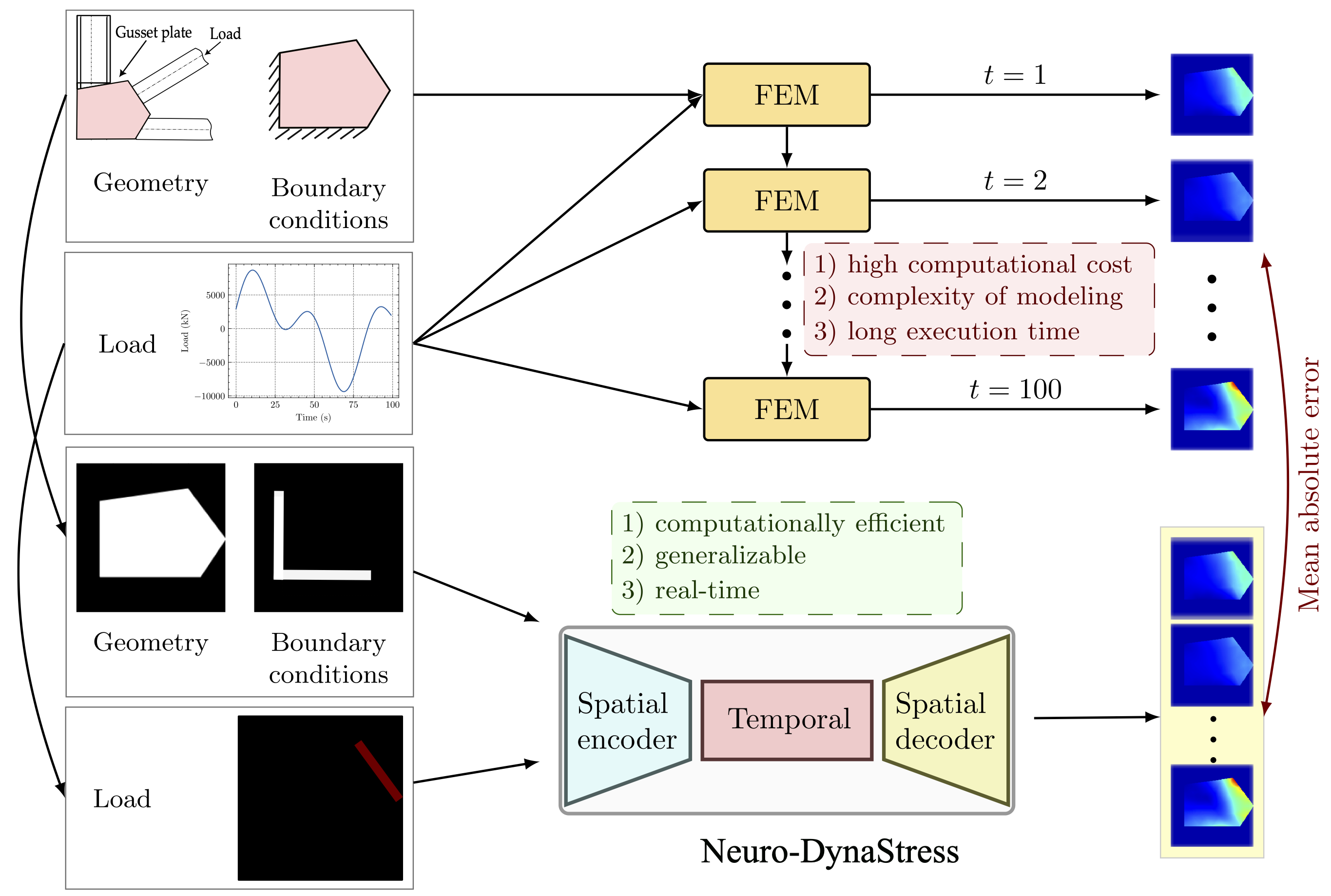Abstract
Structural components are typically exposed to dynamic loading, such as earthquakes, wind, and explosions. Structural engineers should be able to conduct real-time analysis in the aftermath or during extreme disaster events requiring immediate corrections to avoid fatal failures. As a result, it is crucial to predict dynamic stress distributions during highly disruptive events in real-time. Currently available high-fidelity methods, such as Finite Element Models (FEMs), suffer from their inherent high complexity and are computationally prohibitive. Therefore, to reduce computational cost while preserving accuracy, a deep learning model, Neuro-DynaStress, is proposed to predict the entire sequence of stress distribution based on finite element simulations using a partial differential equation (PDE) solver. The model was designed and trained to use the geometry, boundary conditions and sequence of loads as input and predict the sequences of high-resolution stress contours. The performance of the proposed framework is compared to finite element simulations using a PDE solver.
